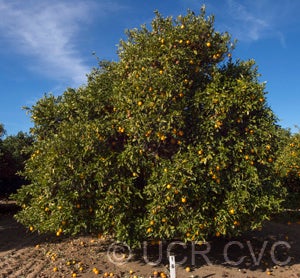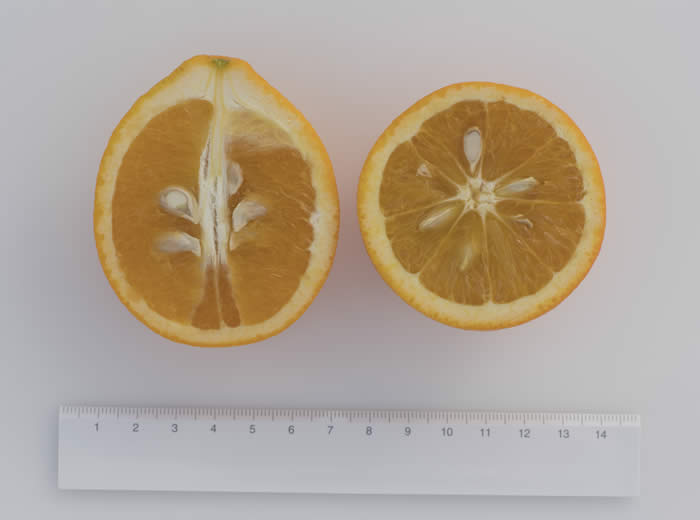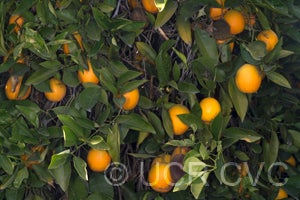Citrus sinensis (L.) Osbeck
CRC 3864
PI 539628
Source
Received as a seedling from CRC 2696, old budline Pera, 1960.
Parentage/origins
Parents unknown.
Rootstocks of accession
Carrizo citrange, C-35 citrange
Season of ripeness at Riverside
Unknown at this time.
Notes and observations
Six seedling budlines were fruit at Lindcove; all appeared identical.
EMN, 3/1987: Somewhat elongate orange but not as elongate as Perao.
EMN, 2/8/1988: Smallish size, elongate, seedy; definite not of commercial potential here.
Description from The Citrus Industry Vol. 1 (1967)
"Fruit medium-small, ovoid to ellipsoid; seeds very few. Rind medium-thin; surface smooth and finely pitted. Color light orange at maturity. Flesh well-colored; firm, fine textured, juicy; flavor rich. Late in maturity. Holds well on tree without deterioration in quality, and stores and ships well.
Tree vigorous, upright; foliage dense, with many leaves of which the petioles are unevenly winged; very productive.
Moreira and Filha (1963) and other Brazilian horticulturists have expressed the opinion that the Pera variety is probably the same as Lamb Summer of Florida. If so, it originated as a seedling in Volusia County sometime prior to 1897, when it was first described and named for the owner. It never attained much importance in Florida. Several clones are recognized of this variety in Brazil, including Perão, a light-bearing tree with fruit which is large and resembles Shamouti. A. Salibe has called attention to the resemblance between Pera and the Berna variety of Spain.
Introduced into Brazil at an early date, Pera has long been the principal variety as well as the most important late export variety. It constitutes nearly three-fourths of the commercial acreage in the region of Rio de Janeiro and slightly more than a third of the commercial acreage in São Paulo State."
USDA Germplasm Resources Information Network page for Pera sweet orange


